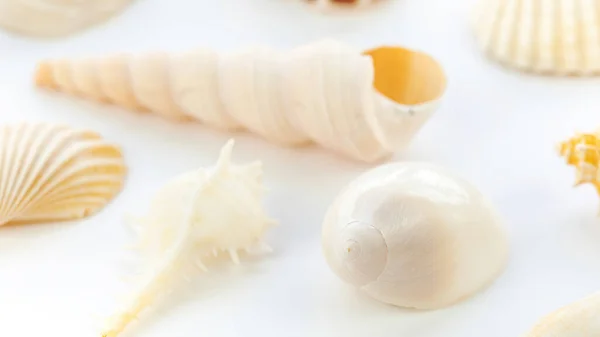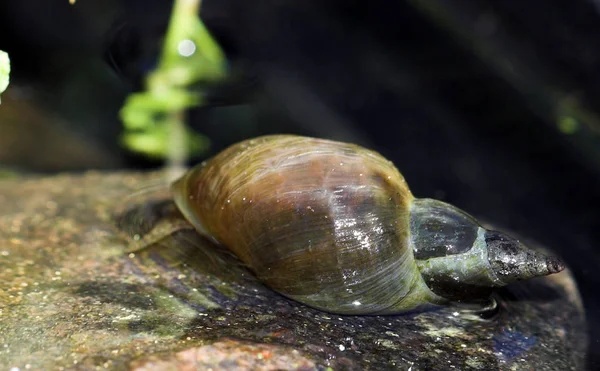Are you wondering if bettas eat snails? Or is your betta fish eating just about anything in your aquarium?
In this article, I’ll review all you need to know about betta fish and snails and the best type of snails to keep as a betta tank mate.
Most bettas are noted to be curious marine animals and would likely eat anything in the tank if given a chance, so yes, bettas eat snails.
However, this doesn’t mean that bettas will naturally go after snails as their preferred meal, so it’s essential that snails kept in the same tank as the betta are larger and better capable of defending themselves.
Can Betta Fish Live With Snails?
The answer is yes. Regardless of tank size, generally, adding snails to your tank won’t necessarily make bettas turn aggressive. Though your betta may nibble at the snail and try to get to the fleshy parts, they often spit it out as they don’t like the shells.
However, keeping snails in the same tank with your betta is also dependent on your betta.
If you note that your betta displays traits of aggressiveness, it’s in your best interest to avoid keeping them with other tank mates. But if your fish has a relatively calm disposition, you can add the snail and observe its reaction.
Different Types Of Snails
The type of snail to keep in your tank depends on various factors, such as the ability of the snail to survive in the tank. Thus, it’s crucial to select the best candidate from the variety of snails suitable for the environment.
It’s essential to keep your snails alive, as dead snails in the tank might contaminate your tank and negatively affect the water quality.
Below are the most suitable types of snails:
Turret Snails (Malaysian Trumpet Snails)
- Water pH: 7.0 – 7.5
- Temperature 70 – 78°F
- Lifespan: 1 year
- Average Size 1-5 inches

Malaysian trumpet snails are beginner’s snails that are suitable to keep in your tank. They’re easy to keep with your betta as they can survive under the same tank conditions (pH 7.0-7.5, Temperature: 70 – 78°F) as the betta fish.
Turret snails can grow up to 1.5 inches with a life span of 1 year. These snails don’t require much upkeep and will thrive under ideal tank conditions.
The Malaysian trumpet snail exhibits almost the same behavior daily and is likely to be seen foraging leftovers as well as eating algae. However, the possible negative of keeping turret snails is that they breed quickly, and you might have unwanted snails in your tank.
Ramshorn Snails
- Water pH: 7.0 – 7.5
- Temperature: 70 – 78°F
- Lifespan: 1 year
- Average Size: 1-1.5 inches

Ramshorn snails are similar in size and lifespan to turret snails. They require the same water temperature and pH as betta fish, meaning you don’t have to worry about special tank treatment to meet their requirements.
Ramshorn snails are prone to eat plants if placed in tanks with plants in them, though they might survive in a tank without plants as they feed on algae and old food.
Like other snails, you need to be wary about excessive reproduction from the snails as they’re likely to overbreed if well-fed and tank conditions are good.
Pond Snails
- Water pH: 7.5
- Temperature: 70 – 78°F
- Lifespan: 1 year
- Average body Size: 1 inch

These are the most common snails you’ll find in your tank.
They can even make their way into your tank from live plants in the tank without your realizing it. They also feed on algae and old food in your tank, so they’ll help keep your tank clean.
Pond snails tend to survive better at a pH of 7.5. However, they can still survive below a pH of 7. They top the list in terms of reproduction activity, as they can steadily reproduce once well-fed and tank conditions are ideal.
Assassin Snails
- Water pH: 7 – 8
- Water Temperature: 75 – 80°F
- Expected Lifespan: 2 years
- Average Size: 3 inches
As you can deduce from its name, assassin snails eat other snails and are the best snails you can turn to when other snails are overcrowding your tank.
Assassin snails reproduce slowly and can still survive on the food in your tank, meaning you can keep them even when you don’t have snails in your tank.
However, to keep your snail alive for a long time, they must get enough meat. Therefore, you can feed them meat in the form of freeze-dried blood worms or other meat that your betta will also eat.
Assassin snails are difficult to keep, but that doesn’t mean you should worry. You’re good to go as long as tank conditions are ideal for your snail, which includes the same ph suitable for Malaysian trumpet snails.
I would only keep assassin snails when they’re needed, as the betta fish might consider them a threat due to their size. Thus, it would be best to keep an assassin snail only when your tank is overcrowded with other snails.
Mystery Snails
- Water pH: 7.0 – 7.5
- Water Temperature: 68 – 82°F
- Lifespan: 1 year
- Average Size: 2 inches
Keeping mystery snails isn’t complex as long as they’re adequately fed. It’s easy to care for these snails.
Mystery snails don’t require extra effort to keep them fed, as they can feed on fish pellets or live food reaching the substrate that your betta will ignore but makes a good meal for the mystery snail.
Nerite Snails
- Water pH: 7.5
- Water Temperature: 72 – 78°F
- Expected Lifespan: 1 year
- Average Size: 1/4 – 1/2 inch
Nerite snails may be the smallest snail on this list, but you shouldn’t overlook their small size as they’re the best at removing algae pellets from your tank.
However, it’s best to be extra careful about keeping Nerite snails as they require a temperature and pH level that differs slightly from the requirement of the betta fish. Thus, it’s essential to maintain a steady pH and temperature level to ensure the survival of the snail.
Nerites are beautiful, and they come in a variety of different colors and patterns. These snails are a good choice if you have the time and don’t mind breeding snails that need a little extra care.
Most snails survive in a betta aquarium, and keeping aquarium snails could help eliminate soft algae and algae wafers from forming in your betta tank.
Can Your Snails Clean Your Fish Tank?
Snails are noted for their ability to eat any material at the bottom of the tank and are often considered good tank cleaners. However, they’ll produce as much waste themselves.
If you intend to keep snails in your betta tank to clean your tank, that probably won’t be a good idea. Snail waste can rapidly deteriorate the water conditions of the tank and cause the snails to die, which could ultimately cause you to lose your betta.
If you intend to keep more snails in your tank, you must be a dedicated aquarium hobbyist ready to constantly clean the tank.
You must be diligent about making the tank habitable for your betta and the snails by removing waste, dead plants, and dead snails. Achieving this will help keep your tank a spotless and healthy environment for your betta and snails.
Do Bettas Eat Snails?
This depends on your betta’s temperament.
An aggressive betta tends to attack small snails when it considers them a threat. An extremely docile snail can also be targeted by an aggressive betta. A calm betta makes a good tank mate. Bettas aren’t typically passive fish and will also attack snails when they aren’t well-fed.
A mystery snail is also considered a perfect meal for betta as its eyes look like a pair of worms, which is a primary food for a betta. To reduce the chances of the betta attacking your snail, ensure your betta is properly fed at all times.
You can also keep plants in your tank to provide ample hiding places for your snails, as the betta can’t eat what it doesn’t see. The betta’s territorial nature extends to its own species, as both female and male bettas can’t co-exist as tank mates.
What Snails Should You Not Keep With Your Betta?
Large snails with pronounced eyes (that resemble worms) should not be kept in the betta’s tank, as your betta might attack their eyes. This is often common with mystery snails that are repeatedly attacked by bettas.
You may also want to avoid keeping snails that travel on decorative plants in your fish tank. This can lead to potential diseases in your betta.
Snails kept in the aquarium are commonly snails that can transform into an army overnight. Therefore, you need to maintain snail overpopulation to avoid compromising the safety of your betta.
Snails overrunning your tank can be eliminated with a dip in potassium permanganate. This will prevent them from taking over your aquarium and stressing their tank mates.
How To Protect Your Snails From Your Betta Fish

Betta fish aren’t always the most welcoming tank mates for snails, so you might be reluctant to keep them with your betta.
Below are a few tips to minimize the risk your snail faces from sharing the same tank with a betta and also to prevent the snail from being attacked or eaten by the betta.
Buy Larger Snails
Another tip for the peaceful coexistence of betta fish and snails is to buy hardy snails. When you purchase hardy snails for your tank, they’re more likely to survive in the tank with the betta.
Avoid keeping delicate and easily stressed snails in the same tank as your betta, as they will try to eat the snails.
It’s important not to keep baby snails in the same tank as your betta, as they’re not large enough to fend off attacks from the betta and are highly susceptible to being considered prey.
Add Snails Before the Betta Fish
Introducing snails first to the tank is another tip to limit the risk to the snails. Bettas are primarily territorial and like to protect their domain from intruders.
Placing snails in the tank first helps protect them from attacks that would be expected if the betta had already been in the tank for a long time.
If you’re setting up a tank for the first time, place the snails in the tank first and allow them to acclimatize before introducing the betta.
The snails can also hide in the aquatic plants, which will allow them to become better tank mates to the betta.
In Summary: Do Betta Fish Eat Snails?
The decision to keep snails in the same tank as your betta depends on your commitment to maintaining the survival of both species.
Snails can be relatively safe when kept in the same tank as the betta, but while this is often the case, there are also occasions when bettas get aggressive and try to eat the snails.
Therefore, if you intend to house these species together, you should ensure that the snails are capable of reproducing and surviving in the same tank conditions as the betta.
These precautions will help you retain at least some snail population even if the betta eats some of the snails. Size is another factor determining if the snails will be eaten by a betta.
Tiny snails are more likely to be eaten by a betta than large ones.
Overall, there’s no easy way to determine how an individual betta will react to the company of snails or other fish. You’ll simply have to be observant and take all necessary precautions.
Related Reading:
- Do Betta Eat Mealworms?
- Why Is My Betta Not Eating?
- Why Is My Betta Not Moving?
- How Many Days Can Betta Fish Go Without Eating?

